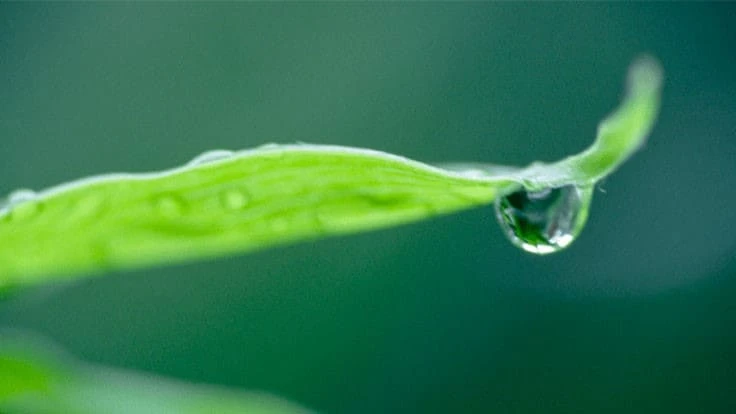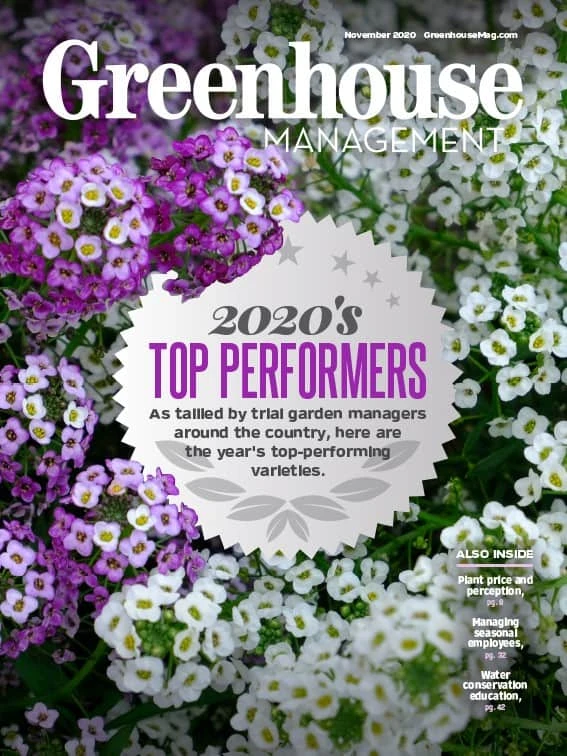

Despite regional marketing and educational campaigns, consumers in general often have a skewed perception of drought and water conservation techniques.
Research from Texas A&M and Michigan State University has revealed data that will allow the green industry to craft targeted messages to consumers that may help stretch a diminishing water supply.
Melinda Knuth, who recently earned her PhD in horticulture at Texas A&M, and her team focused on the practical applications of the global concern that potable water will become less accessible in the future and how it impacts plant life in landscaping and horticulture.
“As water sources diminish, there will still be a need to install and support landscape plants. Future water availability could change the American landscape,” Knuth says.
Knuth conducted the research with Charlie Hall, economist and Texas A&M Ellison Chair, as well as Michigan State’s Bridget Behe, Patricia Huddleston and Tom Fernandez. The collaborators published a detailed account of their research in HortTechnology (“Consumer Perceptions of Landscape Plant Production Water Sources and Uses in the Landscape During Perceived and Real Drought”). Read the full transcript here.
According to previous research by Brian Hurd at New Mexico State University, “outdoor water-use preferences are not only influenced by water prices and conservation motives, but also the time needed to implement conservation activities, knowledge on how to conserve water and monetary restrictions. Influencing consumer attitudes, in turn, results in longer term responses for landscape water use, thereby potentially reducing future water demand.”
Knuth notes that recent research suggests consumers’ attitudes and behaviors toward potable water supplies have changed in other countries because of greater social awareness and increasingly widespread exposure to drought conditions. But the United States is not as advanced in its acceptance of using recycled water for landscape irrigation, the researchers discovered. Recycled water, or gray water, is that which has already been used in various household capacities, except for toilet and sewage needs.

Previous research found that recycled wastewater — from washing machines, bathtubs, showers, and sinks but not toilets — constitutes about 60% of the total wastewater from households. This can equate to about 30,000 gallons of gray water per year for a family of four. The expanded use of gray water for irrigation may result in groundwater recharge and may play a substantial role in the reuse and total reduction of water usage by households.
Knuth and her collaborators conducted an online survey of 1,543 U.S. consumers to assess their perceptions about landscape plants, the water source used to produce them, and plant water needs to become established in the landscape.
They discovered that consumers placed greater relative importance on water source in production over water use in the landscape for both herbaceous and woody perennials.
“They preferred fresh water over recycled water and least preferred a blend of fresh with recycled water for perennials and recycled water used for woody perennial production. In addition, the group that did not perceive a drought but experienced one placed a higher value (higher utility score) on nursery plants grown with fresh water compared with those which were actually not in drought and did not perceive one,” the team writes in HortTechnology.
The source of recycled water and how its defined differs from region to region.
“In Texas, we use the term ‘reclaimed,’ and that can come from showers, sinks and washing machines, for example,” she says. “The use of reclaimed water is done mostly at the city level for irrigating parks, school yards and athletic fields.”
In the study, participants were presented with the terms fresh, blended and recycled. Fresh and blended were more accepted than recycled, she says. Municipalities and other public entities will need to increase educational and promotional efforts to improve the perception of recycled water, its safety and its benefit to overall water conservation.

One possible reason the U.S. hasn’t adopted a widespread use of recycled water compared to other countries is the lack of extreme drought experiences — at least until the devastating California drought of the 2000s, she says.
“The U.S. really hadn’t experienced extreme drought for long periods of time, so the behavior mindset wasn’t there for Americans,” she says. “It’s a deliberate change that has to occur. And with regulatory changes, such as temporary water restrictions, many people go back to their old ways once the regulations stop.”
In tandem, the green industry must promote their own use of recycled water and explain its benefits.
“Educate the consumer and tell them how you recycle water,” she says. “Use language that this plant has been grown with recycled water to communicate that you’re conscious of your environmental footprint. And if you have some sort of accreditation regarding water conservation, let the consumer know. Tell the story.”
with regulatory changes, such as temporary water restrictions, many people go back to their old ways once the regulations stop.” — Melinda Knuth
Drought perception
The public tends to have a skewed perception of drought and Knuth’s research shows that people often perceive a drought when there actually isn’t one occurring. Consequently, the team found that attitudes toward water conservation between those who correctly perceive they are in a drought differs from those who correctly perceive they’re not in a drought.
Therefore, the industry must also tout the benefits of low water-use plants in the landscape, not only to conserve water, but to encourage plant sales in times of adequate and low-water periods.
“People don’t buy attributes, they buy benefits,” she says. “Explain the benefits of a low water-use plant and the benefits of saving water at the production level and the landscape level. Consumers will be interested and eager to learn, and this could be your competitive advantage. It’s an incredible engagement tool if the grower is willing.”
Growers can use tools such as social media and videos to help tell the story, but much of this conversation will need to happen at the retail level, she adds.

“Signage that explains ‘this plant was grown with recycled water’ or ‘if you’re interested in water conservation, consider these plants’ is a great way to start,” she says.
The use of water-conserving plants has been promoted as a water conservation strategy for homeowners. A better understanding of consumer perceptions of water source and landscape plant water use “would help plant sellers and policymakers know what consumers are currently thinking and what motivates their water-use behavior before additional reductions in water use change the industry in unintended ways,” Knuth and her team writes in their research article.
All interested parties, including the green industry, need to be aware of why consumers may not understand the drought situation, she says. For instance, there are unconsciously aware consumers who may simply need to hear about drought conditions and water conservation benefits and regulations. Or the consciously aware consumer may be sensitive to the education and signage and take the appropriate action.
This study revealed that water source in production and water use needs in the landscape are relatively similar to plant price in terms of relative importance to the consumer. Therefore, efforts to communicate water source and water needs may be favorably received by consumers. Previous research has found that consumers are willing to purchase and, in some cases, pay a premium for products and services that enhance their quality of life, including environmental well-being.
“This research is important because drought is far-reaching and non-selective, making water conservation crucial,” Knuth says. “Understanding how homeowners behave in drought conditions, and lack of drought, can potentially affect which plants horticulture retailers provide, drive future water conserving policy, and nudge consumers to more positive water conservation behavior."

Explore the November 2020 Issue
Check out more from this issue and find your next story to read.
Latest from Greenhouse Management
- Anthura acquires Bromelia assets from Corn. Bak in Netherlands
- Top 10 stories for National Poinsettia Day
- Langendoen Mechanical hosts open house to showcase new greenhouse build
- Conor Foy joins EHR's national sales team
- Pantone announces its 2026 Color of the Year
- Syngenta granted federal registration for Trefinti nematicide/fungicide in ornamental market
- A legacy of influence
- HILA 2025 video highlights: John Gaydos of Proven Winners





